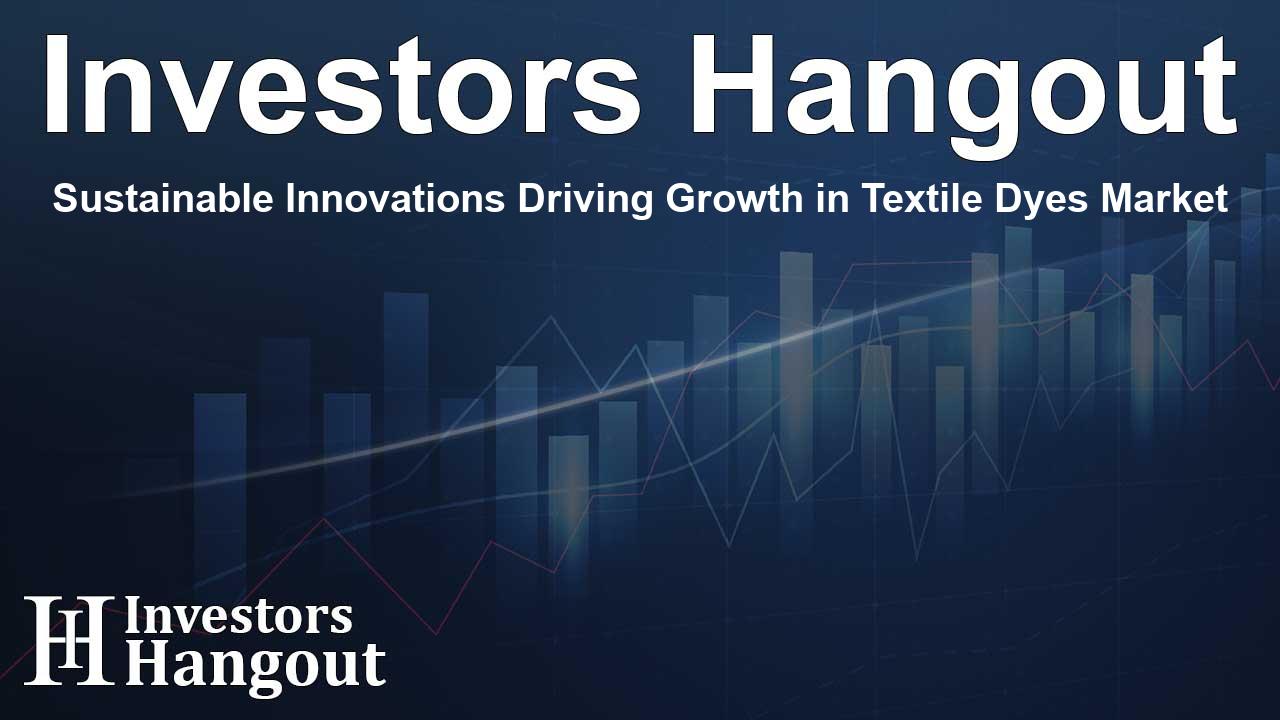Sustainable Innovations Driving Growth in Textile Dyes Market

The Textile Dyes Market: Growth and Innovations
The textile dyes market is experiencing robust growth, with projections indicating a remarkable rise from a valuation of USD 12.11 billion in 2023 to an estimated USD 17.48 billion by 2032. This growth represents a compound annual growth rate (CAGR) of 4.16% during the upcoming forecast period. This upward trend is being driven by an increasing demand for vibrant textiles and a strong global push towards sustainability within the industry.
The Role of Sustainable Innovations
As consumers become more environmentally conscious, the textile dyes market is shifting towards greener alternatives. Innovative companies are motivated to create biodegradable dyes, aligning with regulatory trends that emphasize ecological responsibility. Regulatory frameworks such as the recent chemical guidelines introduced by the U.S. Environmental Protection Agency are leading the industry towards more sustainable practices. Pioneers like Archroma are at the forefront of these changes, developing environmentally friendly dye solutions that appeal to modern consumers.
Expanding Applications of Textile Dyes
Textile dyes are no longer restricted to conventional fabrics; their applications have broadened significantly to include home furnishings, cosmetics, and even medical supplies. This expansion reflects a growing consumer interest in aesthetically pleasing yet sustainable products, driving demand across diverse sectors.
Market Overview in the U.S.
The U.S. textile dyes market is predicted to grow from USD 2.55 billion in 2023 to USD 3.85 billion by 2032, boasting a CAGR of 4.67%. This growth is primarily fueled by rising consumer demand for environmentally friendly and durable dyes and advancements in production technologies. Major companies like Huntsman Corporation are incorporating sustainable techniques into their processes, further stimulating market dynamics.
Key Players in the Textile Dyes Market
Several prominent organizations operate within this burgeoning sector, contributing their expertise and innovation:
- Archroma (Drimaren, Foron)
- Huntsman Corporation (Novacron, Terasil)
- Kiri Industries Ltd. (Remazol, Vinyl Sulfone)
- Zhejiang Longsheng Group Co., Ltd. (Reactive Blue 19, Disperse Red 60)
- BASF SE (Helizarin, Basazol)
- Dystar Group (Levafix, Dianix)
- Atul Ltd. (Sulphur Black BR, Napthol AS)
- Bodal Chemicals Ltd. (H Acid, Reactive Black 5)
- Lanxess AG (Bayronal, Levanyl)
- Alchemie Technology (DyeScan, Endeavour)
- Colourtex Industries Pvt. Ltd. (Colorfix, Texbrite)
- Sumitomo Chemical Co., Ltd. (Sumifix, Sumitone)
- Jay Chemical Industries Ltd. (Jayzol, Jayanil)
- Anand International (Anazol, Anacid)
- Kyung-In Synthetic Corporation (KISCO) (Kisperse, Kisactive)
- Everlight Chemical Industrial Corp. (Everjet, Everacid)
- Runtu Co., Ltd. (RT Reactive, RT Disperse)
- Colorant Ltd. (Colorfast, Ecofix)
- Aarti Industries (Aarticid, Aartizol)
- Setas Color Centre (Setalan, Setazol)
Consumer Preferences and Market Trends
Shifting consumer preferences significantly shape the future direction of the textile dyeing industry:
- There’s a growing inclination towards natural, non-toxic dyes as part of a sustainable fashion movement.
- Functional dyes are increasingly used in activewear and healthcare textiles.
- Personalization is driving demand for innovative dye technologies such as reactive and digital dyeing.
- Traceability and ethical sourcing are becoming essential in dyeing processes.
- Low-impact, biodegradable solutions are favored among environmentally conscious consumers.
Regional Insights: Asia Pacific Leads the Market
In 2023, the Asia Pacific region dominated the textile dyes market, holding a considerable 44% market share. Countries like China, India, and Bangladesh serve as major manufacturing hubs, known for producing high-quality textiles at competitive prices. This region’s investments in sustainable dyeing processes support its leadership in the market. The ongoing expansion of the fashion industry in these countries further fuels the demand for innovative and efficient dyeing solutions.
North America: A Fast-Growing Market
The North American region, particularly the U.S. and Canada, has emerged as the fastest-growing area in the textile dyes market. This growth is propelled by rising consumer interest in sustainable textile products and the presence of a well-established fashion industry. Leading companies like DuPont and Huntsman are investing heavily in green dyeing technologies to meet evolving market demands.
Recent Developments in Textile Dyes
In March 2025, Archroma introduced the AVITERA® RASPBERRY SE dye, featuring deeper red shades while significantly reducing water and energy usage. This development highlights the ongoing commitment to sustainable practices within the dyeing sector.
Frequently Asked Questions
What is the expected value of the textile dyes market by 2032?
The textile dyes market is anticipated to reach USD 17.48 billion by 2032.
What factors are driving the growth of the textile dyes market?
Sustainable innovations, regulatory compliance, and increasing demand for vibrant textiles are key drivers.
Which segment dominates the textile dyes market?
The viscose segment dominated in 2023, holding a 24% market share.
How do reactive dyes compare to other types?
Reactive dyes offer superior color fastness and eco-friendly properties, making them favorable among consumers.
What is the trend towards sustainability in the market?
There is a significant shift towards sustainable practices with a focus on biodegradable and environmentally safe dyes.
About The Author
Contact Riley Hayes privately here. Or send an email with ATTN: Riley Hayes as the subject to contact@investorshangout.com.
About Investors Hangout
Investors Hangout is a leading online stock forum for financial discussion and learning, offering a wide range of free tools and resources. It draws in traders of all levels, who exchange market knowledge, investigate trading tactics, and keep an eye on industry developments in real time. Featuring financial articles, stock message boards, quotes, charts, company profiles, and live news updates. Through cooperative learning and a wealth of informational resources, it helps users from novices creating their first portfolios to experts honing their techniques. Join Investors Hangout today: https://investorshangout.com/
The content of this article is based on factual, publicly available information and does not represent legal, financial, or investment advice. Investors Hangout does not offer financial advice, and the author is not a licensed financial advisor. Consult a qualified advisor before making any financial or investment decisions based on this article. This article should not be considered advice to purchase, sell, or hold any securities or other investments. If any of the material provided here is inaccurate, please contact us for corrections.
